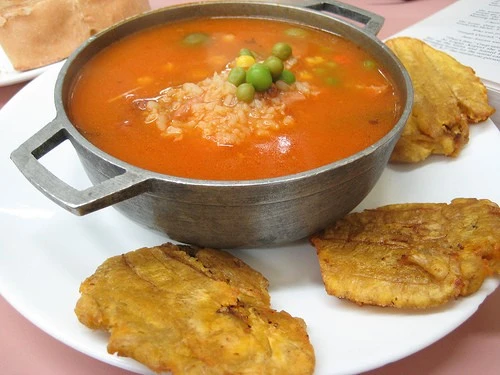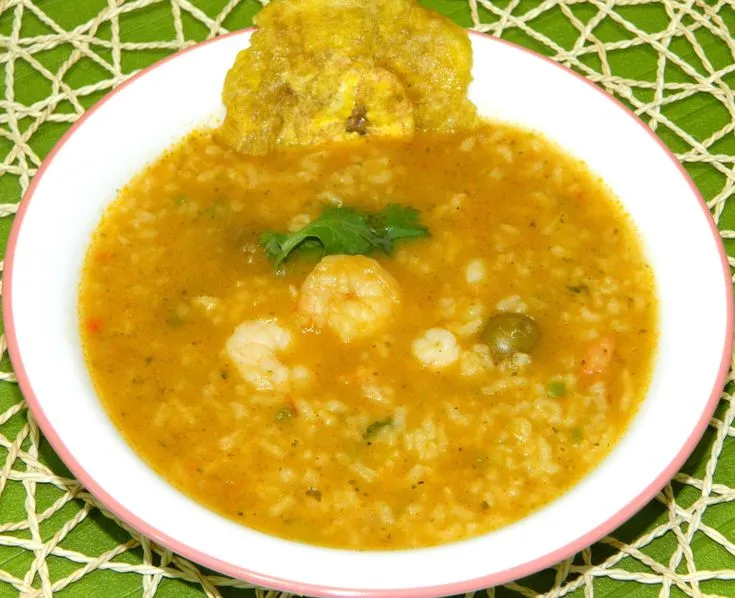Introduction to El Boricua Recipes
Puerto Rican cuisine, a vibrant blend of Spanish, African, and Taino influences, is a true reflection of the island’s rich cultural heritage. This culinary tradition, known for its bold flavors and hearty dishes, has evolved over centuries, creating a unique gastronomic identity.

- The Essence of Puerto Rican Cuisine: At the heart of Puerto Rican dishes lies a deep appreciation for local ingredients like plantains, meat, and rice. The use of adobo and sofrito, blends of herbs and spices, is fundamental, imparting distinctive flavors that are synonymous with the island’s cooking. Explore the Richness of Puerto Rican Cuisine on Wikipedia.
- Influence of History and Culture: The history of Puerto Rico plays a crucial role in shaping its cuisine. The Spanish brought olives, sugarcane, and beef, while African influences introduced techniques like frying. The Taino legacy is seen in the use of native ingredients and methods like barbecuing. This melting pot of cultures has given rise to a diverse and flavorful culinary landscape. Understanding Caribbean Cuisine and Its Influences.
Puerto Rican cuisine is not just about food; it’s a celebration of life, family, and heritage. Each dish tells a story of the island’s past and present, inviting everyone to savor its rich and diverse flavors.
Traditional El Boricua Recipes

1. Arroz Con Gandules (Puerto Rican Rice with Pigeon Peas)
Arroz con Gandules, the quintessential Puerto Rican dish, embodies the spirit of the island’s cuisine. This flavorful rice dish, often considered the national dish, is a staple at gatherings and a symbol of Puerto Rican pride.
- Ingredients and Preparation: The dish combines rice, pigeon peas (gandules), meat, and a rich base of sofrito. The key to its unique flavor is the annatto oil, which imparts a vibrant color and earthy taste. Discover Delicious Puerto Rican Recipes on Pinterest.
- Cultural Significance: Arroz con Gandules is more than just a meal; it’s a part of Puerto Rican identity. Served during holidays and family events, it represents the island’s history and culinary traditions. Learn About Pernil, a Puerto Rican Delicacy.
2. Bistec Encebollado (Puerto Rican Steak and Onions)
Bistec Encebollado, a comforting Puerto Rican beef stew, is a testament to the island’s love for hearty and savory dishes. This simple yet flavorful meal is a favorite in Puerto Rican households.
- Cooking Techniques: The dish features thinly sliced steak marinated in a blend of garlic, vinegar, and spices, then cooked to perfection with sweet caramelized onions. The key is to let the meat absorb the marinade’s flavors, ensuring a tender and juicy steak. Mofongo: A Must-Try Puerto Rican Dish.
- Variations and Serving Suggestions: While traditionally made with beef, variations include chicken or meat. It’s typically served with white rice, beans, or tostones, making for a fulfilling meal. Tostones: A Popular Puerto Rican Snack.
3. Pernil (Puerto Rican Roast meat)
Pernil, a slow-roasted Puerto Rican meat dish, is celebrated for its succulent meat and crispy skin. A centerpiece at many celebrations, pernil is a true representation of Puerto Rican festive cooking.
- Marination and Cooking Process: The meat shoulder is marinated overnight in a mixture of garlic, oregano, and citrus juices, then slow-roasted until tender. The result is a flavorful and aromatic dish that falls off the bone. Alcapurrias: Savory Puerto Rican Fritters.
- Pernil in Puerto Rican Celebrations: Pernil is a must-have during Christmas and other major celebrations. Its preparation and enjoyment are a time-honored tradition, bringing families together. Festive Puerto Rican Christmas Recipes.
4. Additional Popular Dishes
- Mofongo: People prepare Mofongo, a beloved Puerto Rican dish, by frying green plantains and mashing them with garlic and meat cracklings. They frequently stuff it with seafood, chicken, or beef, providing a versatile and satisfying meal. Pasteles: A Traditional Puerto Rican Dish.
- Alcapurrias: History and Recipe : Alcapurrias, savory fritters made from a dough of green bananas and taro root, are filled with seasoned meat. This street food favorite reflects the island’s African and Taino influences. Sweet Treats: Puerto Rican Desserts.
- Pasteles: Making and Significance: Pasteles, akin to tamales, involve crafting a masa from green bananas and root vegetables, stuffing them with meat, and encasing them in banana leaves. They require a labor of love and are frequently prepared for special occasions. Puerto Rican Recipes Rice.
- Tostones and Maduros: Differences and El Boricua Recipes : Tostones (fried green plantains) and Maduros (sweet ripe plantains) showcase the versatility of plantains in Puerto Rican cuisine. Tostones are crispy and savory, while Maduros are sweet and soft. Puerto Rican Desserts.
- Puerto Rican Desserts: Flan, Tembleque, and Arroz con Dulce : The sweet side of Puerto Rican cuisine includes Flan, a creamy caramel custard, Tembleque, a coconut pudding, and Arroz con Dulce, a sweet rice pudding. These desserts are a delightful end to any Puerto Rican meal. Caribbean Flavors.
FAQs Section
Puerto Rican cuisine, with its rich flavors and diverse influences, often sparks curiosity and interest. Here are some frequently asked questions that delve deeper into this vibrant culinary tradition.
- What are the staples of Puerto Rican cuisine? Puerto Rican cooking heavily relies on ingredients like plantains, meat, rice, and beans. Seasonings like adobo and sofrito are essential for authentic flavors. Explore the Richness of Puerto Rican Cuisine on Wikipedia.
- How does Puerto Rican cuisine differ from other Latin American foods? While sharing similarities with other Latin American cuisines, Puerto Rican dishes are unique in their use of specific ingredients and cooking methods, reflecting the island’s history and cultural diversity. Understanding Caribbean Cuisine and Its Influences.
- Can Puerto Rican dishes be made vegetarian or vegan? Certainly! You can adapt many traditional recipes to vegetarian or vegan diets by substituting meat with plant-based proteins and using vegetable broths. Discover Delicious Puerto Rican Recipes on Pinterest.
- What are some must-try Puerto Rican desserts? For a sweet taste of the island, try Flan, a creamy caramel custard, or Tembleque, a coconut-based pudding. These desserts are not only delicious but also reflect the island’s love for sweet treats. Sweet Treats: Puerto Rican Desserts.
Conclusion
In conclusion, the culinary landscape of Puerto Rico is as vibrant and diverse as its culture. From the hearty Arroz con Gandules to the savory Bistec Encebollado, each dish tells a story of the island’s rich history and cultural fusion. The traditional Pernil embodies the spirit of Puerto Rican celebrations. Additionally, dishes like Mofongo and Alcapurrias highlight the creativity and resourcefulness of its people.
Puerto Rican cuisine is not just about the combination of flavors; it’s a celebration of life, a testament to the island’s resilience and joy. The sweet delights of Flan and Tembleque offer a glimpse into the island’s love for desserts, rounding off meals with a touch of sweetness.
However, for those looking to explore this flavorful world, it’s important to remember that Puerto Rican cooking is more than just following recipes; rather, it’s about fully embracing the culture, understanding the history, and connecting with the heart of the island’s culinary heritage. Moreover, regardless of whether you’re a seasoned cook or a curious foodie, embarking on the journey through El Boricua recipes is an enriching adventure that is definitely worth undertaking.
As we’ve explored the essence of Puerto Rican cuisine, we’ve seen how it reflects the island’s history, culture, and soul. It encourages us to savor, celebrate, and share—a true culinary treasure waiting for discovery. Explore the Richness of Puerto Rican Cuisine on Wikipedia.
